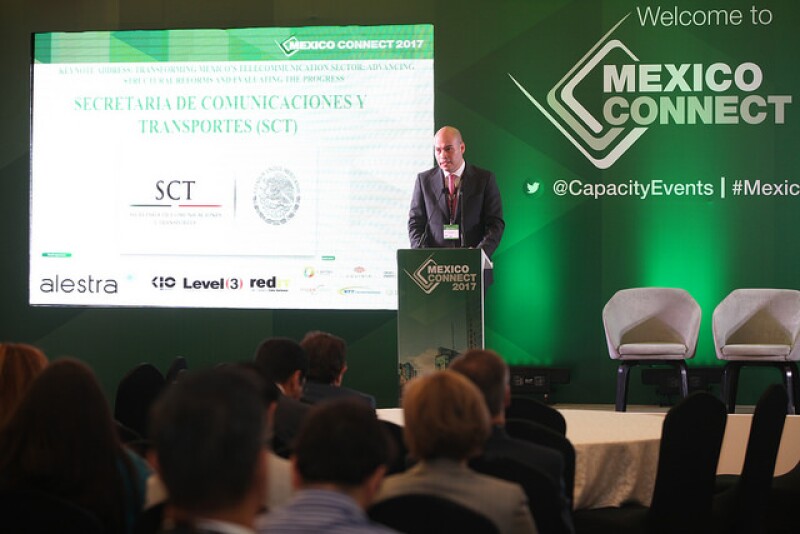
Ezequiel Gil Huerta, director general of telecommunications, policy and broadcasting at the Secretaria De Comunicaciones y Transportes (SCT), has shared the ministry’s transformation vision of Mexico’s telecommunication sector to an audience at Mexico Connect attended by around 300 delegates.
Spectrum in the country has gone from 220MHz to 404MHz and more spectrum is being released, said Huerta when describing how the National Digital Strategy is revolutionising and transforming the landscape of the local telecom industry, adding how the country is advancing structural reforms and evaluating progress.
He told the Mexico Connect audience: “At the end of last year, the private in investment in the sector was over 80 billion pesos. The country’s offering has got better in terms of the telecoms sector, including the satellite industry. After our reform efforts the amount of internet users rose from 41 million to 54 million users. It is one of the most important growth rates out of the OECD countries. Internet coverage before saw 21 per 100 inhabitants have it. This figure has risen to 61 in 100 inhabitants.” He added that there have also been an additional 20 million mobile subscribers, rising to 81 million, 75% of which are now using smartphones.
Huerta highlighted the efforts from the government, via the ministry, in awarding a contract to build a shared 4G wireless network, Red Compartida. “This network will reach more people, equating to 99.2% of the entire population,” the director general stated. “Development and management of the network will have private investors both domestically and internationally. It expands Mexico’s digital borders allowing us to play a closer part of the global digital community."
The director general revealed that in EU-Mexico talks, EU representatives thought developing a shared network would be very difficult, but he squashed those fears by highlighting the progress of the programme, adding: “Our market’s new conditions should lead to new stakeholders and operators entering the market.”
Together with the IRS, the Ministry has helped to launch the ARRIS system, which allows leasing enabling carriers to offer better services. A key objective for the year is to offer these facilities in most cities and many states by the end of this year. The paperwork process for building new infrastructure is being improved across all the principalities and Huerta said: “We’re trying to simplify the process, moving away from a permanent licence. In a couple of weeks’ time we’re starting this programme in 8 principalities in the country and we want to take this to the national stage.”
The director general further laid out plans to close the digital gap by adding that more fibre-optic investment and enhanced satellite services will aid the efforts in rolling out internet to the entire population. Huerta said that there are already over 100,000 public Wifi sites in the country but “we want 130,000 sites of free Wifi in public places and the impact of the project is huge when looking at how many people use the internet on the go.”
The Secretariat of Communications and Transportation (SCT) commissioned Cisco to develop an analytics tool not only to ensure that citizens have access to broadband but to check they’re using the network.
To help the efforts of moving towards a Digital Mexico there are 32 digital inclusion centres across the country, which offers digital training and workshops. “Over 80% of people that take up the training complete it.”
The market will continue evolving to bring in new stakeholders, more investment and services giving people better access. “Our mantra is “to offer all Mexicans with the opportunity”, which allows for a more prosperous, competitive and equal telecommunications sector.”
Huerta concluded by saying: “Thank you to Capacity for putting on the Mexico Connect event, which is very important and also sees many people internationally from around the world. I hope the event will be fruitful and on behalf of the ministry, thank you.”




